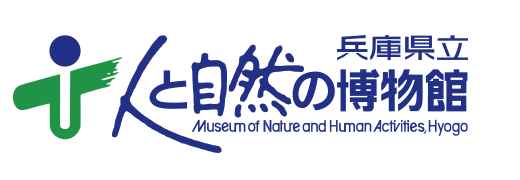メインページ(英語)
|
The Museum of Nature and Human Activities, Hyogo (HITOHAKU an abbreviation in Japanese) has opened since
October 10, 1992. The purpose of the museum is to help citizens in Hyogo area
and other people appreciate the beauty and dignity of the natural environment
around us. Here visitors can enjoy unique exhibits and educational programs
about nature and human life. |
|
| Organization | |
| Research The museum supports natural and urban environment interdisciplinary research. |
|
| Collections The museum houses extensive collections of geological and biological specimens, as well as photographs, print, and recordings. Our herbarium (HYO) is also listed in Index Herbariorum. |
|
| >> PAGE TOP | |
 |
||
| Location The Museum of Nature and Human Activities, Hyogo 6 chome Yayoigaoka Sanda Hyogo 669-1546, JAPAN Tel: +81-79-559-2001 Fax: +81-79-559-2007 |
||
| Research The museum supports natural and urban environment interdisciplinary research. |
||
| Admission Fee Adults 210 Yen College Students 150 Yen High School Students 100 YEN Junior High and Elementary School Students 0 Yen |
||
| Opening Hours 10:00 am to 5:00 pm, admission until 4:30 pm. |
||
| Closed Every Monday (or Tuesday if the National Holiday falls on Monday). From 28th December until 2th January, and other days for occasional renovation(1/5-2/6). Open on Monday for the following: *Apr.29 to May.5 *Jul.20 to Aug.31 |
||
Transportation
There is Priority parking for handicapped people. By Train: * From Osaka Station take the JR Line to the Sanda Station. And the Kobe Dentetsu Line to the Flower Town Station. 5 minutes walk from there. * From Sannomiya Station take the Hokushin Kyuko Line to the Tanigami Station. And the Kobe Dntetsu Line to the Flower Town Station. 5 minutes walk from there. By Car: * The Museum is 5 minutes from the Kobe Sanda Interchange. * There is no parking at the museum. So please use the public car parks located nearby. * There is Priority parking for handicapped people. |
||
| >> PAGE TOP | ||
| Starting at the third floor and ending at the first floor, the permanent exhibits are arranged into five themes. |
|||||||||||||||||||||||||||
|
|||||||||||||||||||||||||||
|
|||||||||||||||||||||||||||
|
|||||||||||||||||||||||||||
|
|||||||||||||||||||||||||||
| >> PAGE TOP | |||||||||||||||||||||||||||
| Research Publications * Humans and Nature (in English and in Japanese) This journal dedicated to the dissemination of fundamental knowledge of science itself and human-science interaction. Original research articles, reports, note and reviews are published annually. It is annually published since 1992. Our official journal entitled "Nature and Human Activies" had been ceased its publication by the No. 12 in 2007. Articles written in English are integrated into the journal "Human and Nature". English articles are also welcome, however, their format is somewhat different from that of Japanese ones. |
|
| Other Publications * Humans and Nature 61 episodes 2002. 199 pages. (in Japanese) * Rokko san (Mt. Rokko) 2001. 147 pages. (in Japanese) * Exhibition Guide book 1996. 87 pages. (in Japanese with English abstract) |
|
| >> PAGE TOP | |





















